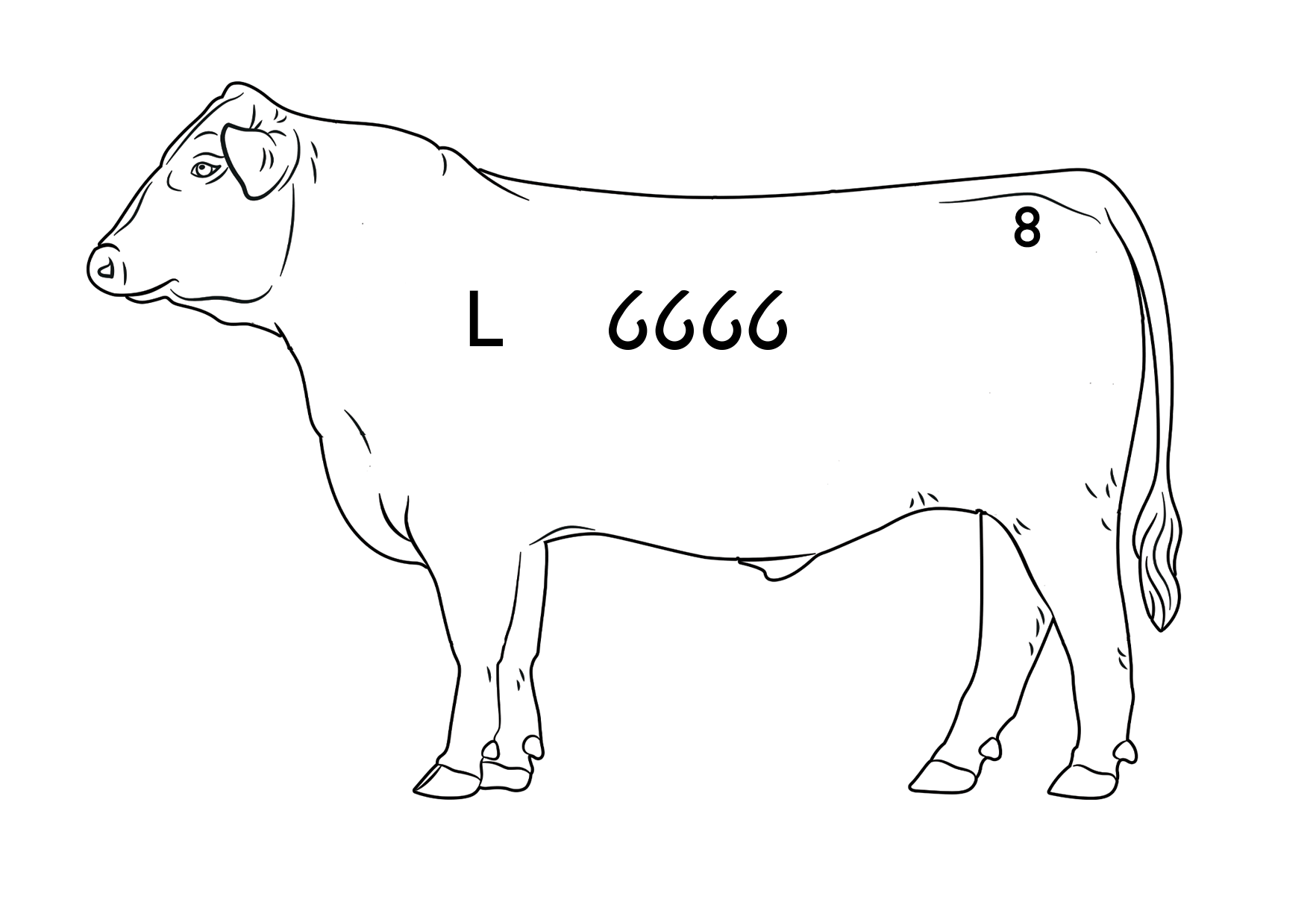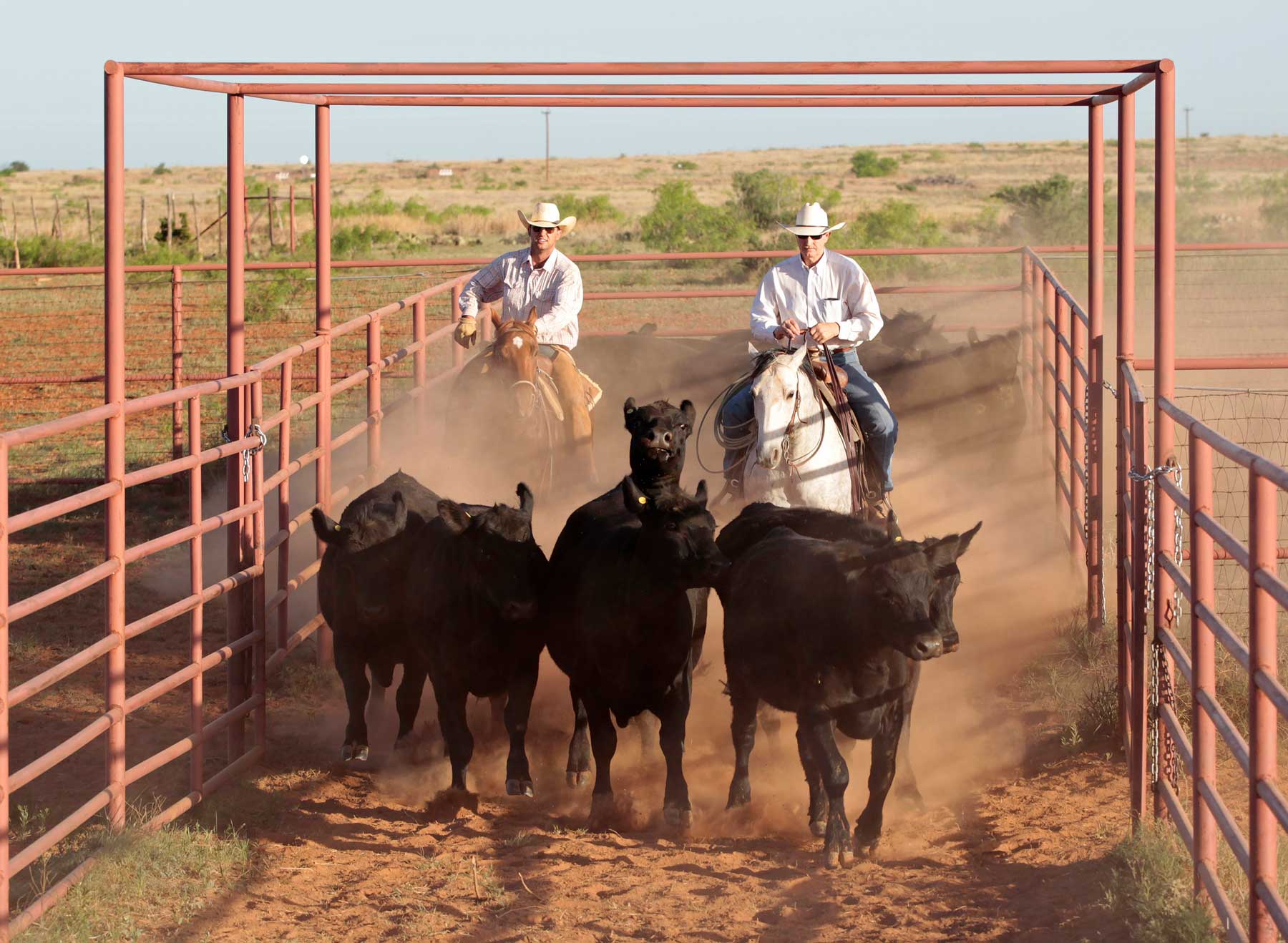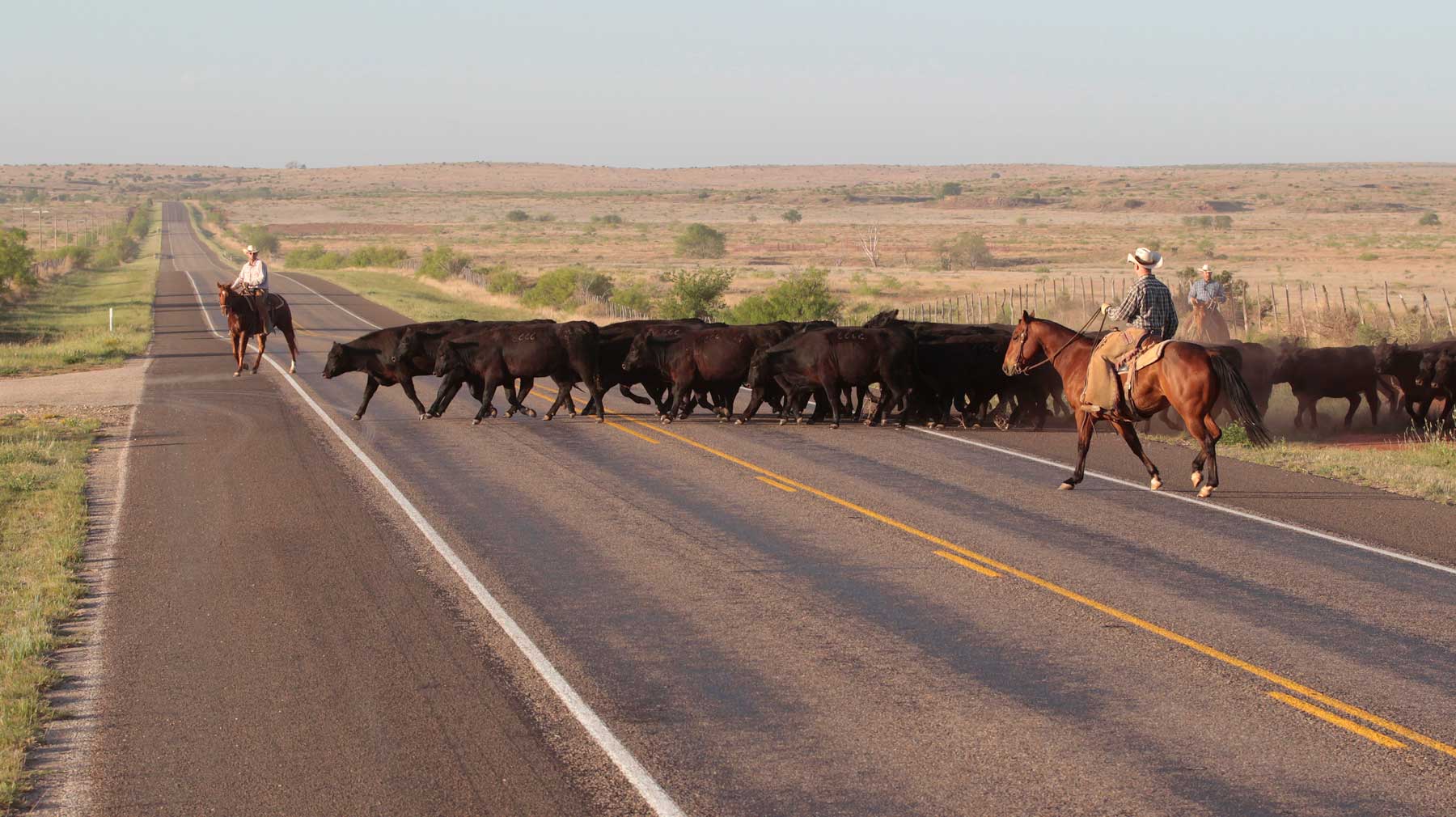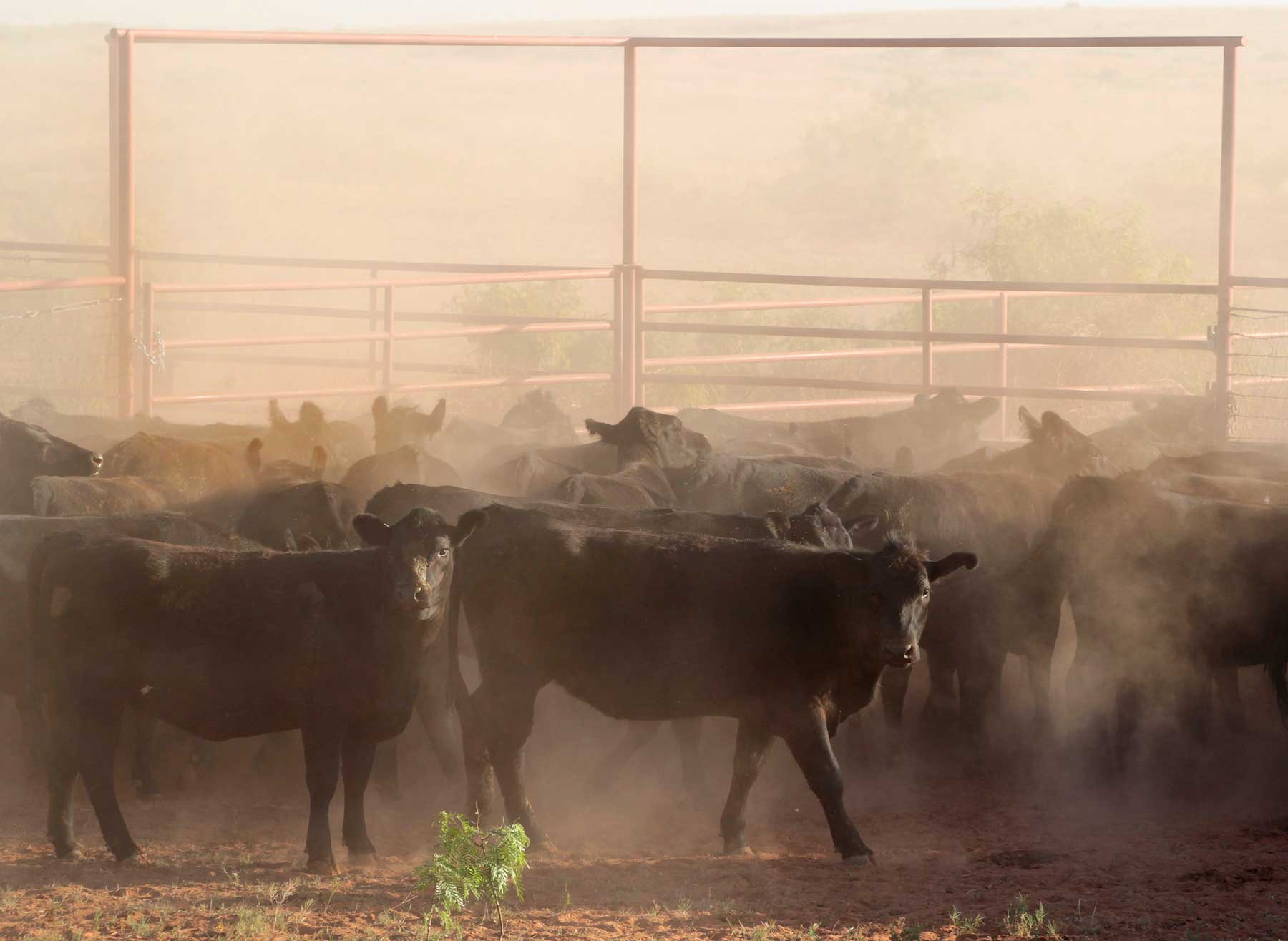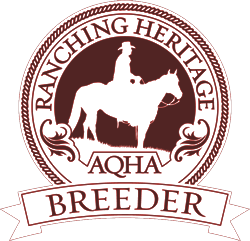Home |
The high quality of Four SixesTM cattle is well known, and that reputation continues today, making the ranch a front-runner in the cattle industry.
For more than 150 years, the Four Sixes Ranch has focused on preservation and stewarding the land to accomplish quality beef cattle production.
The ranch, which is headquartered in Guthrie, Texas, remains devoted to a basic concept: use progressive cattle management practices while focusing on preserving genetics and tradition. The Four Sixes Ranch is leading the way by holding fast to tried and true traditions while embracing modern innovation and advancements. Annual branding events look like a page out of an Old West novel, except for the electronic identification and advanced record-keeping system that uses the latest technology to offer quality assurance to discerning consumers.
Established by Captain Samuel “Burk” Burnett in 1870, the Four Sixes Ranch is a true working ranch with deep roots in the past and a vision for the future.
With more than a century of expertise, the ranch’s superior cattle breeding program relies on tried and true experience while improving with modern innovations.
When fully stocked, the Four Sixes Ranch maintains a breeding herd of about 6,000-7,000 Angus cattle.
Twenty years ago, Hereford cows dominated the herd, but after a hundred years of Hereford cattle, the ranch made the transition to Angus cattle to increase performance in the feedlots and ultimately provide higher quality meat going to the retail customers.
The cattle are divided among multiple herds that graze the same management unit throughout the year. Conservative stocking rates help to ensure that the pastures are not overgrazed and give the manager more options when Mother Nature throws a curveball. In the fall, calves are weaned and shipped to the Frisco Creek Ranch in Sherman County in the Texas Panhandle to be backgrounded for 30-45 days; the lighter cattle will then be turned out on winter wheat pasture, while the heavier cattle will be sent to the feedlot. During the summer months, the ranch purchases stocker cattle to graze at Dixon Creek.
To ensure a continuing legacy of excellence, the best of the best heifer calves are chosen to join the herd. The selection process involves several rounds of culling, and ultimately, the cattle in the herd must produce to remain.
Each cow is expected to have a calf at her side in the spring and be in good flesh in the fall to stay in the herd. Those same criteria happen all the way through to adulthood in a cow. There are no second chances.
“We not only want a cow that is conformationally and genetically good but one that can get out and make a living,” said Joe Leathers, Four Sixes manager. “The third criterion is they have to perform in the feedlot. We fed our own cattle for years and years, all the way through, so we have a lot of data on how well our cattle perform. If we have a group of cattle that, as a whole, aren’t performing well in the feedlot, then we need to adjust on the bull battery, but it has also got to happen on the females.”
Being progressive has kept the ranch in business for more than 150 years. Visionary leadership from generations of ranch owners and managers is never satisfied with the status quo but always looking to the future.
The cattle production focus is carcass performance and volume, “We work day in and day out trying to improve the genetics on our cattle to put more pounds of meat in the supermarket for the American consumer,” Leathers said. “The transition to Angus cattle decreased health issues and increased our gains in the feedlots by a tremendous amount.”
Angus bulls, either leased or owned, are turned out with the cows around the first of April, or roughly one month prior to branding. Generally, branding takes place in April/May. Fall works occur around September/October.
The heifers calve out in February and March. This year, approximately 1,000 head of homegrown heifers were calved at both the Guthrie and Dixon Greek locations.
For cattle handling practices and low-stress stockmanship, the ranch relies on talented cowboys working from horseback. In an effort to keep stress on the animals to a minimum, pens are situated in pastures to allow a natural flow and funneling effect to gathering cattle. Additionally, cattle are handled slowly and quietly. The pens and chute systems are designed with cattle behavior in mind. Weather plays a major role in when and how the cattle are processed too. For example, hot weather will delay working the cattle to avoid the risk of stressing the calves.
The ranch is able to market its cattle to “Natural” and “NHTC” (Non-Hormone Treated Cattle) programs due to its commitment to record keeping, humane handling, eIDs and top-tier herd health management. Cattle that get accepted into these types of programs are both age- and source-verified, which makes them eligible to ship overseas and earn a premium.
The health of the animals is of utmost importance. The ranch does not cut corners with vaccinations and control of external and internal parasites. Because of the ranch’s attention to herd health, there is less need for doctoring and the use of antibiotics. If, and when, cattle need to be treated with antibiotics, they receive an ear notch. Those marked individuals are disqualified from the All-Natural Program but are still qualified for the premium NHTC Program.
While the ranch holds to its traditions, the managers are early adopters of progressive herd management practices such as electronic identification and digital record keeping. When the cattle are vaccinated against brucellosis, an eID and hang-down tag are placed to allow for accurate and specific record keeping. Cow records include information on her bred status, vaccination dates, birth records and progeny performance. From birth to the processing plant, eID allows true traceability in addition to helping with the bottom line and overall herd productivity.
Animal Welfare considerations are taken seriously in the production, care and handling of all livestock at the Four Sixes Ranch. Over the years, procedures for processing and handling cattle have improved greatly. Technology has played an integral role; for example, cattle use to be placed in a chute to palpate, they progressed to a squeeze chute and now they have evolved to using a silencer hydraulic chute system. Cattle were pregnancy tested by rectal palpation, which transcended into a more cumbersome ultrasound technology and now it is performed with a more compact ultrasound transducer wand without palpation.
The Four Sixes participates in the Beef Quality Assurance program, which is a nationally coordinated, state-implemented program that provides systematic information to U.S. beef producers and beef consumers on how common-sense husbandry techniques can be coupled with accepted scientific knowledge to raise cattle under optimum management and environmental conditions. BQA guidelines are designed to make certain all beef consumers can take pride in what they purchase – and can trust and have confidence in the entire beef industry.
Stories On The Range.
Red Steagall interviews the General Manager of 6666 Ranches, Joe Leathers. A look at how the ranch survived tough times and how multiple generations of dedicated employees have been an important factor in the success of the operation.
What industry experts are saying
Cattle industry leaders offer testimonials to the high quality of Four Sixes’ Angus stock and program.
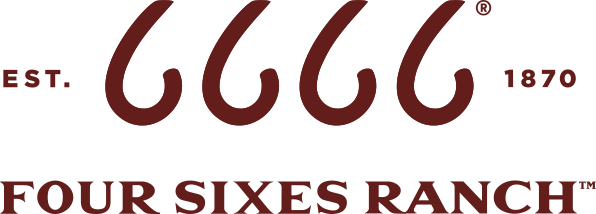
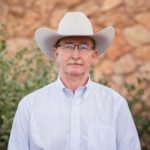 Joe Leathers is the general manager of the historic Four Sixes Ranch, his employer of more than two decades. An accomplished horseman and cattleman, Joe understands agriculture from the ground up. Reared as the son of a small rancher and cotton farmer, Joe spent his summers and free time after school in the fields at home, developing a strong work ethic that remains with him to this day. After college, he pursued a career in ranching, where he served the Moorhouse Ranch as wagon boss for several years. In 1999, he joined the Four Sixes Ranch in Guthrie, Texas, and in 2004 was relocated to the Dixon Creek Division in Panhandle, Texas, where he worked as foreman until 2008, when he moved back to Guthrie to take the reins as general manager.
Joe Leathers is the general manager of the historic Four Sixes Ranch, his employer of more than two decades. An accomplished horseman and cattleman, Joe understands agriculture from the ground up. Reared as the son of a small rancher and cotton farmer, Joe spent his summers and free time after school in the fields at home, developing a strong work ethic that remains with him to this day. After college, he pursued a career in ranching, where he served the Moorhouse Ranch as wagon boss for several years. In 1999, he joined the Four Sixes Ranch in Guthrie, Texas, and in 2004 was relocated to the Dixon Creek Division in Panhandle, Texas, where he worked as foreman until 2008, when he moved back to Guthrie to take the reins as general manager.